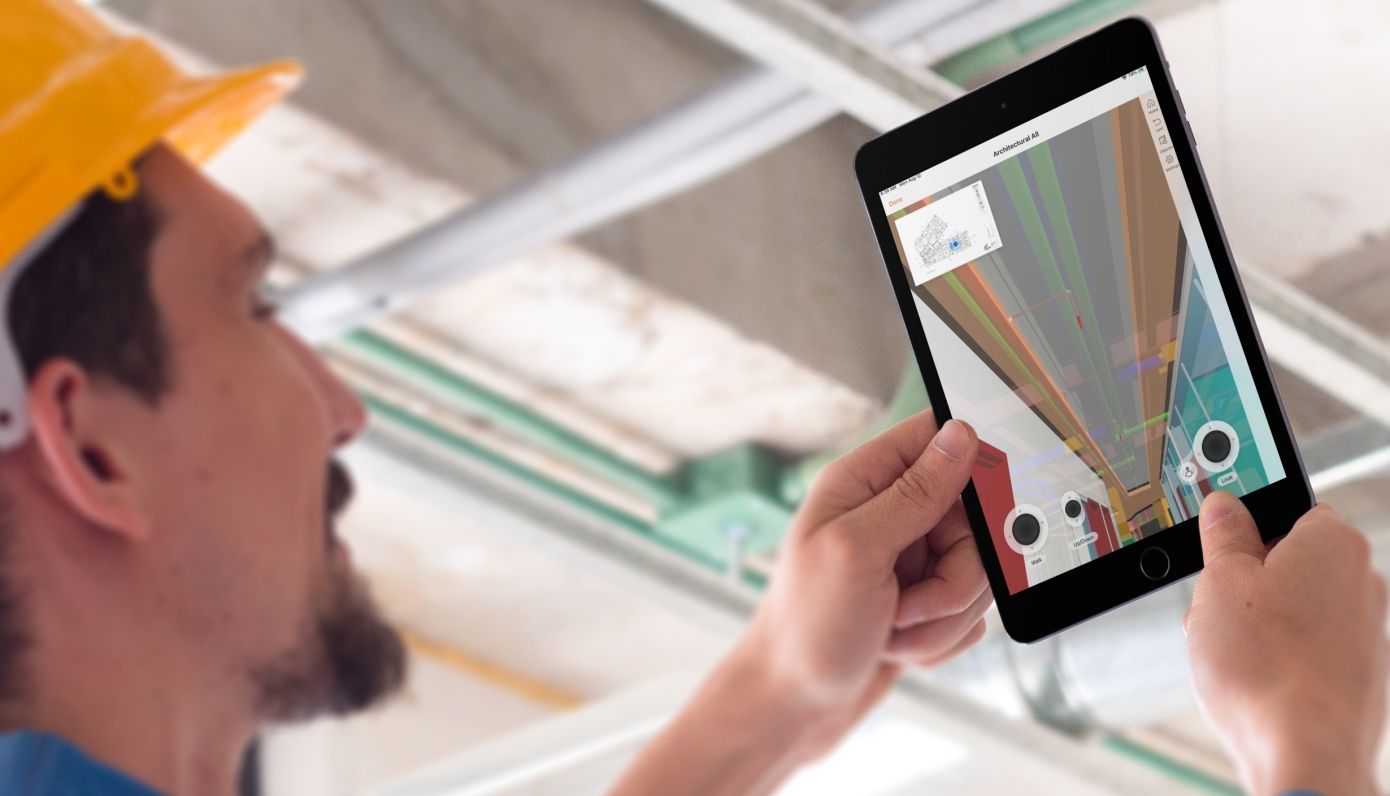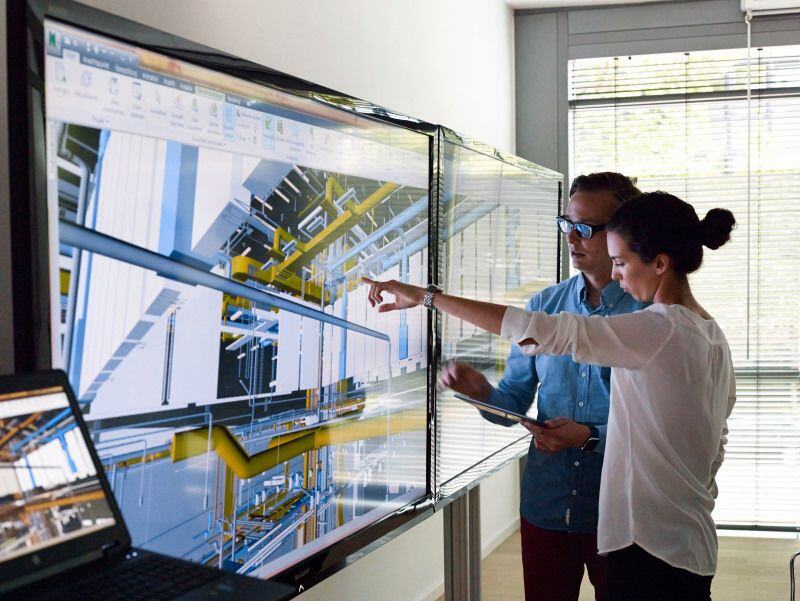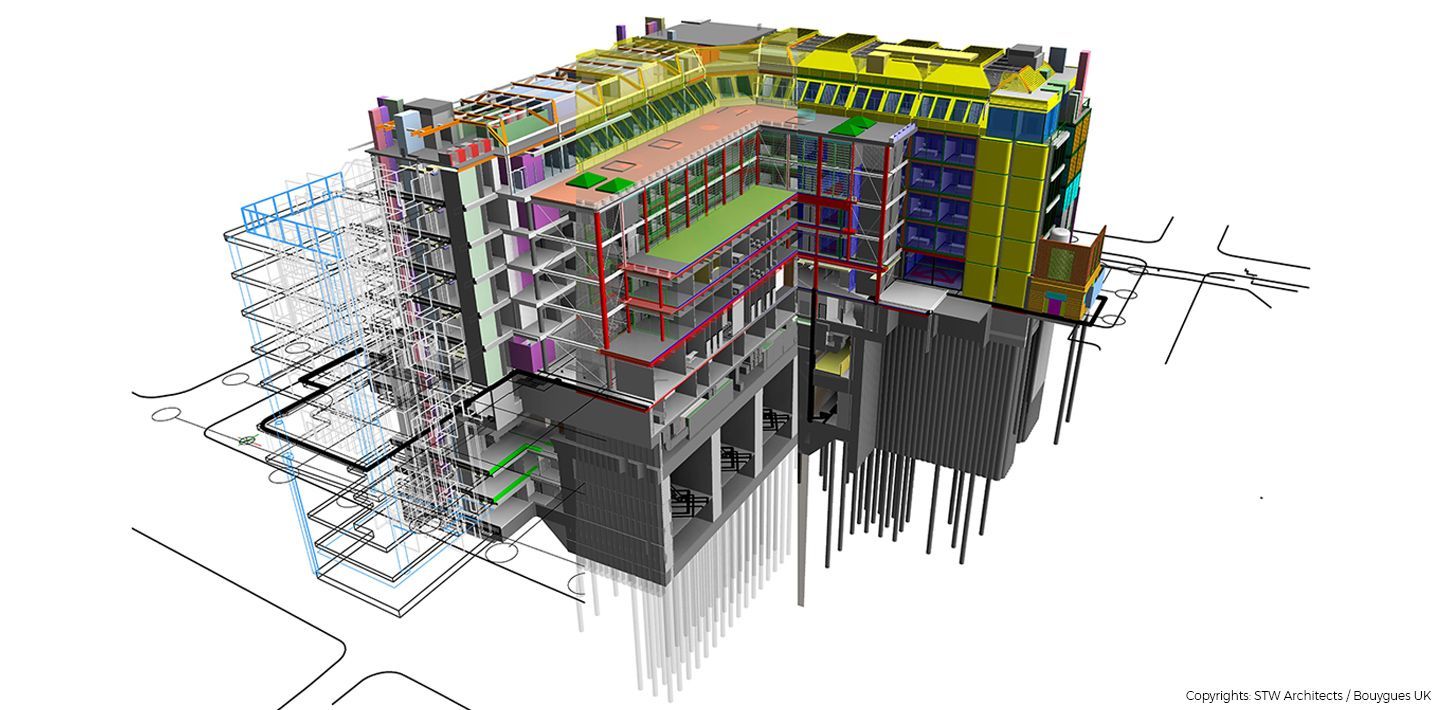What Jobs Can You Take Up As A BIM professional?
Table of Contents
Why are BIM jobs so much in demand today? Building construction technology has evolved considerably in the last two decades, owing to sophisticated building materials, new-age architectural practices, fabulous engineering solutions, and the emergence of several specialized fields in the industry. Undoubtedly, BIM (Building Information Modelling) is one of the essential practices binding the industry together right now, leading several architects, civil engineers, and other construction professionals to opt for BIM careers that are all about digital innovation. Let’s have a closer look at the various types of BIM jobs in the industry and what kind of work they entail.
BIM is a virtual representation of the most significant building elements in models to help stakeholders visualize and make decisions in design, construction, and operational phases. The term “BIM” first appeared in the early ‘90s, but it took a decade for it to gain widespread recognition and adoption. Now, BIM is playing catalyst to a massive digital revolution in AEC (Architecture, Engineering and Construction).

Adoption of BIM technologies
Most of the European Countries and a few states in the United States have already mandated BIM for public projects, and it is being extensively used in India for the residential sector. It is anticipated that when Virtual Reality technology kicks in at an affordable and convenient form, BIM will inevitably be mandated for most projects to maximise efficient utilisation of resources and minimise the friction between design and construction. For this very reason, BIM roles are likely to be high in demand and also offer accelerated career growth and high salaries to professionals who take them up.
Importance of BIM in Today's AEC Industry
Building Information Modelling (BIM) has become an indispensable tool in the Architecture, Engineering, and Construction (AEC) industry due to its numerous advantages and the transformative impact it has had on project delivery. BIM is a collaborative process that involves creating and managing digital representations of the physical and functional characteristics of a building or infrastructure project. Its importance lies in the following aspects:
1. Enhanced Collaboration and Coordination
BIM facilitates seamless collaboration among various stakeholders, including architects, engineers, contractors, and owners. It enables them to work on a shared digital model, reducing errors, miscommunications, and conflicts that often arise in traditional methods.
2. Improved Visualization and Design
BIM allows for detailed 3D modelling of buildings, enabling designers to visualize and explore different design options more effectively. This leads to better decision-making and the identification of potential issues early in the design phase, reducing costly changes during construction.
Read more: The Best Architecture Portfolios: 12 Inspiring Examples | 2026 Updated
3. Clash Detection and Conflict Resolution
BIM models can detect potential clashes or conflicts between different building systems, such as structural elements, MEP (Mechanical, Electrical, and Plumbing) systems, and architectural components. This early detection helps resolve conflicts before they occur on-site, saving time and money.
4. Improved Cost Estimation and Quantity Takeoff
BIM models contain accurate and detailed information about materials, quantities, and specifications, enabling more precise cost estimations and quantity takeoffs. This helps in better budgeting and resource planning.
5. Facility Management and Operations
BIM models can be used beyond the construction phase for facility management and operations. The digital representation of the building, along with its associated data, can assist in maintenance, renovations, and asset management throughout the building's lifecycle.
6. Sustainability Analysis
BIM models can be integrated with energy analysis tools to evaluate the building's energy performance, enabling designers to optimize designs for better energy efficiency and sustainability.
7. Prefabrication and Modular Construction
BIM facilitates prefabrication and modular construction by providing accurate digital models that can be used for offsite manufacturing and assembly, resulting in faster construction times and reduced waste.
8. Regulatory Compliance
BIM models can be used to ensure compliance with building codes, accessibility standards, and other regulatory requirements, reducing the risk of non-compliance and associated penalties.
Despite the numerous advantages, the successful implementation of BIM requires a shift in mindset, proper training, and the adoption of standardized workflows and processes across the AEC industry. However, the benefits of BIM, such as increased efficiency, cost savings, and improved project outcomes, make it an essential tool for modern construction projects and a driving force behind the digital transformation of the AEC industry
Types of BIM Job Roles in the AEC Industry Today
1. BIM Modeller
A BIM modeller could be a fresher in the industry with a related bachelor's degree and some beginner knowledge in BIM. They primarily work in teams on day-to-day BIM duties assigned by BIM designers/managers. Tasks can be as basic as building BIM models from 2D drawings to refining models so that they can be rendered. There is enormous scope at this job level to learn more about industry standards in depth.
Average salary - On average, a BIM modeller’s salary in India is around INR 25,500/month.
2. BIM Designer
BIM designers occupy the next level of the profession, where one is expected to have gained a couple of years of experience in both BIM and their own respective core disciplines (such as architecture, civil engineering, etc.). BIM modelling in all phases, from schematic to as-built drawings, is dependent on employees at this level. BIM designers typically take duties from BIM managers and project managers while simultaneously training BIM modellers.
Average salary - On average, a BIM designer’s salary in India is around INR 31,000 -35,000/month.
3. BIM Engineers
The AEC industry demands several engineers' involvement to complete a project. Structural, electrical, and mechanical engineers are most commonly required for projects that are more complicated than usual residences. An essential engineering degree, 2-3 years of experience in construction/installation services, and exceptional modelling skills in BIM could make one a BIM engineer. BIM engineers spend a significant amount of time designing respective systems, scheduling, material take-offs, documentation, etc. They take duties from other in-house BIM specialists and respective core engineers while also training BIM modellers.
Average salary - On average, a BIM engineer’s salary in India is around INR 30,000 -35,000/month.
4. BIM Manager
When one decides to continue in the field of BIM beyondt 5-7 years, they can become BIM managers. These professionals can serve as BIM specialists who set up the LOD (Level of Detail) for each project based on the requirement. They delegate tasks to BIM designers and modellers, monitor their outputs, and do QC (Quality Checks) to maintain the standards. They are responsible for following the ever-evolving industry norms and practices and updating the standards for BIM professionals in the office.
Average salary - On average, a BIM manager’s salary in India is around INR 75,000 -80,000/month.
5. BIM Coordinator
BIM coordinators are BIM managers/specialists with excellent communication skills who exclusively interact with multiple consultants on a day-to-day basis to coordinate the models and eradicate miscommunication among teams. BIM Coordinators are only required in significantly huge firms where several BIM projects are churned out every year.
Average salary - On average, a BIM coordinator’s salary in India is around INR 55,000 -60,000/month.

6. BIM Facilitator
Given the vastness of the AEC industry, there are several professionals who are unaware of BIM processes, methodology and workflows. BIM facilitators are specialists who form a link between BIM professionals and others in the industry. For example, labourers cannot directly access BIM files to review drawings if they need the latest information for more clarity. Also, sometimes one has to bypass the drawings to build appropriately if the site poses irreparable circumstances. One needs to make timely documentation in BIM to escalate the situation to design and consultant teams. In such cases, a BIM facilitator would act as a translator between BIM users in the offices and non-BIM users at the construction site and update both parties with the required knowledge. This role requires significant experience in both BIM and construction site operations for smooth communication.
Average salary - On average, a BIM facilitator’s salary in India is around INR 30,000 -35,000/month.
7.BIM App Developer
Designers or engineers with coding capabilities can become BIM app developers; they mainly develop plugins for BIM applications. They act as consultants to giant firms and make custom plugins for the projects. Some work as separate enterprises and build generalised plugins based on the data and trends provided by BIM data analysts. There is a vast market for these plugins if they can save a significant amount of time. Relevant knowledge and 3-5 years of experience in both AEC and coding are essential for these BIM professionals to make successful products.
Average salary - On average, a BIM app developer’s salary in India is around INR 35,000 - 40,000/month.
8.BIM Analyst

BIM models carry a lot of data if modelled appropriately. This data can be subjected to various studies and analyses. For example, heating loads are analysed in the Revit models. This analysis would allow anticipating energy consumption throughout the life cycle and help adopt appropriate design changes to become sustainable. BIM designers can do fundamental analysis, but a specialist with proper education (e.g. Masters in Sustainable Design) and experience would be required for a larger project
Average salary - On average, a BIM analyst’s salary in India is around INR 40,000 - 45,000/month.
9. BIM Consultant
One can become a BIM consultant after significant experience in BIM and AEC. There is a lot of margin on how diverse the consultancy could be. One can act as a solo consultant and guide the firms when required or set up a business with several BIM modellers, designers, app developers, etc. The list could go on depending on the size of the firm anticipated. They would support various projects/firms with customised BIM solutions like 3D, 4D, 5D, 6D modelling, clash detection, Quantity take-off, employee training, etc.
Conclusion
BIM will only evolve by leaps and bounds in the coming decades. Future projects will demand even more precision and competing deadlines, and BIM is the only solution that can deliver both without compromising on architecture's aesthetic value.
BIM consultants often take on the complete BIM solution for architectural firms that have limited in-house BIM support. This role not only positions them as essential partners but also enables them to earn a significant share of project profits instead of fixed salaries. This career path offers limitless potential for growth and increased earnings.
BIM has immense potential and offers extensive scope. Its proven efficacy across various sectors underscores its significance in the AEC domain. Despite a high demand for BIM professionals, there remains a shortage in supply, particularly in India, where interest in BIM careers is steadily rising.
In this increasingly competitive landscape, mastering BIM requires professional coaching and consistent practice. Novatr's BIM course offers a crucial first step. Led by BIM experts from top AEC firms, the course delves into real-world BIM applications. Students get hands-on experience with actual BIM projects following the RIBA plan of work. By course completion, you'll possess a robust BIM skillset aligned with industry standards, bolstered by a portfolio showcasing your BIM proficiency.
If you see yourself thriving in a BIM career, check out the BIM Professional Course for Civil Engineers by Novatr to kickstart your BIM journey.
Visit the free Resources page for more insights on BIM, industry trends, career guidance, software, and tools.

 Thanks for connecting!
Thanks for connecting!

%20(1).png?width=767&height=168&name=BIM-A%20A%20(Course%20Banner)%20(1).png)
%20(1).jpg)
.png)



.jpg)



